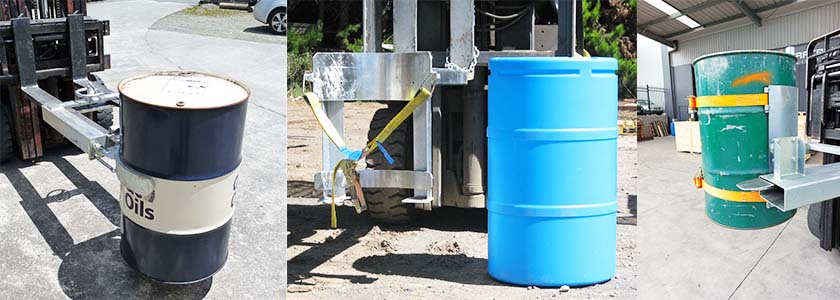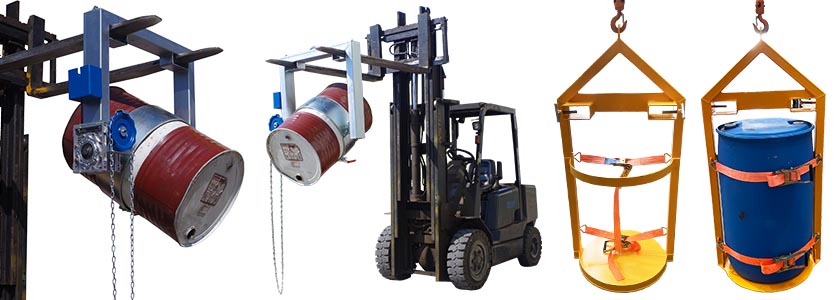What is drum handling?
Drum handling describes the safe lifting, transportation and storage of drums – cylindrical containers built to store a wide range of liquid materials, from food and beverage to hazardous chemicals.
The main goal of safe drum handling is to minimise both manual handling and the potential for spills and other accidents, in order to keep your site and your workers safe. Loads should be stable at all times, particularly when in motion, and drum openings should be oriented in a way that minimises the risk of materials spilling or leaking out.
What equipment is used for drum handling?
Heavy and awkwardly shaped, drums form a significant material handling challenge. In order to move drums safely, a site should invest in dedicated drum handling equipment, which can take on a variety of forms depending on your needs and realities of your site and situation.
This specialised drum handling equipment includes:
Drum Trolley
These manual handling solutions see a user lever a drum off the ground then push or pull it to where it needs to be. Dollies should only be used on flat ground and in businesses that handle drums infrequently.
Forklift drum handling equipment
There are a range of drum lifter forklift attachments (AKA drum grabber forklift attachments) available to help you handle drums, including spade drum handlers, beak drum handlers, and drum rotators and dumpers. Forklift drum handling equipment is ultra-adaptable and efficient, allowing your workers to lift and shift drums from and to almost any point on your site.
Crane drum handling equipment
Ideal for handling and tipping drums with a workshop or factory overhead gantry crane. Also used on construction sites for handling drums with a tower crane.
Drum handling accessories
A number of accessories can make the task of handling drums a little easier, including drum grips and clamps, and drum tippers, tilters and rotators.
How to safely handle drums with a forklift
Having secured the appropriate drum or barrel lifter for your situation, you now have the responsibility for using it safely. Different pieces of equipment will have different safety requirements, so let’s look at a drum lifter attachment for forklifts as an example.
The following tips will help to ensure safety while using a drum handler for forklifts:
- Establish safe operating procedures for when you conduct a drum lift for forklift. Consult the manufacturer or dealer regarding correct use.
- Ensure drum handling attachment is secured to the forklift correctly.
- Ensure the drum is gripped or secured firmly in the drum handling attachment before lifting or tipping the drum.
- Operate the forklift with care when the drum is suspended.
- Train your team on these procedures and ensure everyone understands their responsibilities.
- Conduct regular inspections, and visually check the most critical parts of the equipment before every lift.
- Ensure that every user is wearing the appropriate personal protective equipment (PPE).
- Ensure all drums are labelled and stored correctly.
Helping New Zealand manufacturers safely solve their lifting challenges with the best local and global solutions.
Which type of drum lifter will help your business to be safer, more efficient, more productive? It can be a tricky question to answer if you don’t have the necessary knowledge or experience – which is where our expert team comes in.
At Stratalign we’ve spent years helping Kiwi businesses identify and secure the drum lifting equipment they need to work smarter, quicker and safer. Home to an extensive range of forklift drum lifting equipment, we’ll guide you to the solution that best suits your needs, and we’ll provide deep after-sales support to ensure your new equipment pays dividends.




